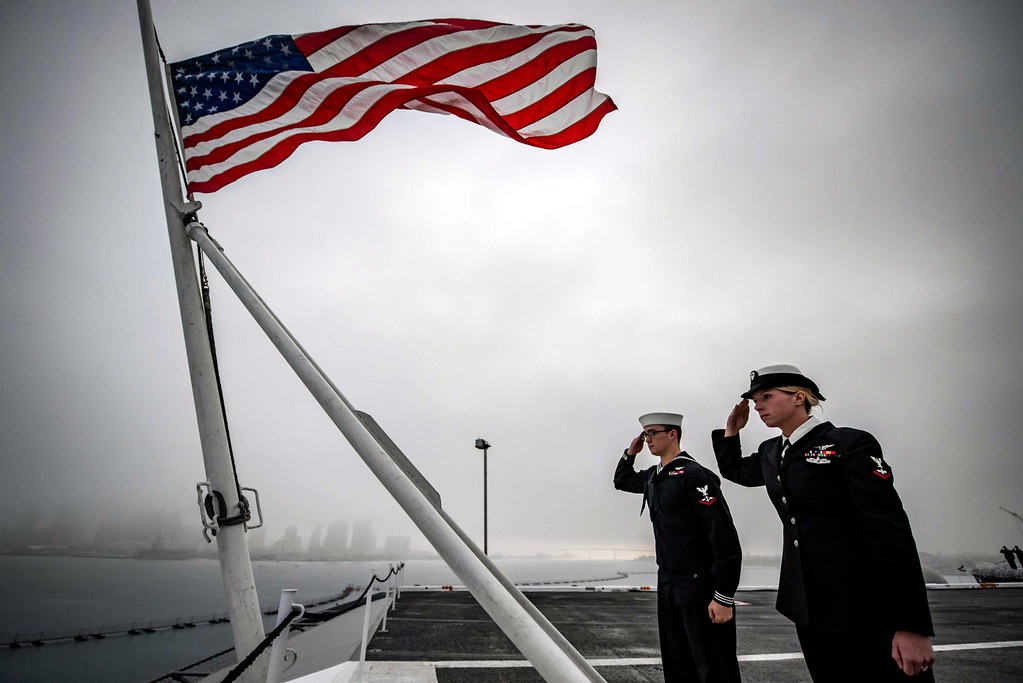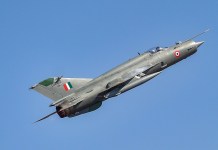In one of the worst peacetime naval tragedies of all times, the United States lost seven of its destroyers at the infamous ‘Honda Point’ on September 8, 1923.
Honda Point (also called Point Pedernales) is in Santa Barbara County, California, just north of the Santa Barbara Channel entrance.
Honda Point has been notorious for its treacherous waters, regarded by mariners as a hazardous region for centuries. In the 16th century, Spanish explorers named it the “Devil’s Jaw” owing to its dangerous rocky outcroppings.
Although sailors typically steered clear of the Honda Point passage, a poor decision made by a fleet of 14 US destroyers led to the massive tragedy on the fateful day that claimed seven of these ships.
A week before the devastating incident, a massive earthquake struck Japan’s Kanto region, triggering huge waves and strong currents to race across the Pacific Ocean to the coast of California.
Despite the highly choppy seas in the Pacific, the U.S. Navy deployed 14 Clemson-class destroyers of Destroyer Squadron 11 (DesRon 11) from San Francisco Bay to San Diego Bay for training maneuvers on September 8, 1923.
The Clemson class destroyers each had a displacement of 1,215 tons and a top speed of 35 knots (40 mph / 64 kph). These ships were incredibly agile for their day. In addition, they carried twelve 21-inch torpedo tubes, which gave them more punch than their little 4-inch guns would have otherwise.
As the vessels made their way between the Bays, they engaged in several tactical and gunnery drills under the command of Captain Edward H. Watson who was on his first-ever unit commander’s duty. The captain flew his flag aboard the USS Delphy.

According to the US Naval Institute (USNI), the navigators on board the ships did not trust radio navigation aids, a relatively new addition to navigation departments. Consequently, the ships of DesRon 11 primarily relied on dead reckoning, resorting to radio navigation aids only when circumstances required it.
The phrase “dead reckoning” refers to an antiquated method of navigation, in which the vehicle’s current position is ascertained by using its initial position, its velocity vector—that is, its speed and direction—and how long that velocity has been maintained. Even though the method worked for marines back in the day, it was not an accurate navigation tool.
What Happened At Honda Point?
As the day progressed, the weather conditions deteriorated, complicating the visibility of the destroyers nearby as the ships continued their course. In response to this situation, DesRon 11 organized itself into a column at the captain’s directive to minimize the risk of any potential disaster.
Lieutenant Commander Donald T. Hunter, the captain of the flagship USS Delphy and the squadron navigator, used dead reckoning to establish that the squadron was prepared to maneuver east into the Santa Barbara Channel entrance at 21:00. The ship had a radio navigation receiver aboard, but the navigator disregarded its suggested bearings because he believed them to be incorrect.
While the squadron had the option to pause and conduct soundings of the water depths to ensure safe passage, Captain Watson did not want his ships to slow down as the squadron was simulating wartime conditions as part of their drills. So, the Fathometer was never pulled out to measure the depth.
Due to the ships’ unique mix of speed, strength, and fragility, controlling them all together required a great deal of skill and experience. For instance, properly employing a torpedo meant racing within a few thousand yards of the target to fire these straight-line, unguided missiles before racing away to safety. DesRon 11’s high speed was because practicing maneuvers at high speed whenever possible was crucial to the destroyers’ combat capability during a surface action.
At a pace of twenty knots, Captain Watson ordered the ships into close formation and charged into what he thought was the Santa Barbara Channel. Thick fog shrouded the region, blocking their view of the dangers lurking around what was, in reality, Honda Point.
Five minutes after the Delphy turned east, it smashed ashore at twenty knots, with the sailors on board the Delphy frantically trying to sound the ship’s siren.

Seeing that the flagship had come to an abrupt halt, another ship— the USS S.P. Lee (DD-310)— instantly swung broadside into the surrounding bluffs instead of turning to port to avoid the flagship.
However, the USS Young (DD-312) did not alter its course. Instead, it passed straight over a string of jagged, underwater pebbles that ripped a huge hole in its hull. The vessel overturned onto the side of the starboard, which led to water rushing inside it, causing a fire. Much of this fire was in the lower compartment of the ship, where the crew was trapped.
Four more vessels including the USS Woodbury (DD-309), the USS Nicholas (DD-311), and the USS Fuller (DD-297) ran aground in shallow waters after colliding with rocks. The crew aboard the USS Chauncey tried saving the Young’s crew but crashed ashore instead.
Nevertheless, the loud sirens of the sunken and damaged vessels alerted seven other ships of the squadron.
Though the USS Farragut (DD-300) and the USS Somers (DD-301) did hit the ground, they survived. Meanwhile, the USS Percival (DD-298), the USS Kennedy (DD-306), the USS Paul Hamilton (DD-307), the USS Stoddert (DD-302), and the USS Thompson (DD-305) successfully altered their formation and changed course, completely evading the disaster.

The five destroyers that managed to escape the rocks sprang into action to save lives by deploying lifeboats and gathering survivors so they could return to the safety of their decks. Fishermen offered to assist in rescuing sailors who were stuck. Additionally, a few ranchers assisted in setting up rope lines to rescue the stranded sailors from the rocks.
This tragedy, popularly known as the ‘Honda Point incident,’ is regarded as the biggest peacetime tragedy to have struck the US Navy. Besides the seven destroyers that sank on the day, there were 23 casualties, including 20 personnel on the Young and three on the Delphy.

The tragedy led to court martial proceedings against 14 officers. Captain Edward Watson, the squadron’s commander, accepted full responsibility for the mishap, which ended his professional life. All seven destroyers that were lost were almost as good as brand-new, none more than five years old.
The Santa Barbara Maritime Museum features an exhibition dedicated to the incident, showcasing photographs, artifacts, and a short film that includes an interview with one of the survivors.
Honda Point is off-limits to the general public and is located on what is now Vandenberg Space Force Base. More than a century since the deadly accident, the remnants of the ships have rusted away. While nothing could be seen from the shore, the destroyers’ wrecks remain beneath the surface, serving as silent, abandoned monuments to the navy’s greatest ship loss in peacetime.
- Contact the author at sakshi.tiwari9555 (at) gmail.com
- Follow EurAsian Times on Google News




